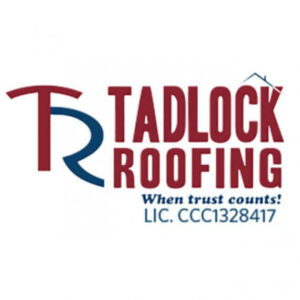Your family is coming for a weekend visit. You’ve been rushing around shopping, cleaning and getting ready for days – then, a storm hits. And it rains. And it pours. And…it starts raining in your living room!
There’s never a convenient time for your roof to spring a leak, but there are things you can do to help mitigate the damage, minimize the cost and, most importantly, prevent future leaks.
STOP THE WATER DAMAGE
Once you discover an active leak in your roof, the first thing to do is minimize the water damage as much as possible. To do this, you should move or put plastic covering over anything that can be damaged by water. This includes: furniture, electronics and other valuables.
CONTAIN THE WATER
Immediately put a bucket or other waterproof container beneath the leak(s) to catch the water. If water splashes onto the floor, put an old T-shirt in the bottom of the bucket to absorb the splash, or try pinning a long string to the ceiling near the leak, so the water will have a path into the bucket. If the paint is bubbling, it’s likely holding water, so puncture the bubble to release the water into your bucket. If you cannot contain or control the water from coming in, it’s time to call a licensed roofing contractor; many offer 24-hour emergency services.
REMOVE THE WATER
Once you have the leak under control, you need to thoroughly dry all carpet, furniture, woodwork and anything else that was exposed to water. Not only will water leave a stain, but mostly, you must prevent mold from growing in your home. If your carpet is soaked, pull it away from the padding and expose both sides of the rug and the pad to briskly circulating air. If the damage is extensive, call a professional water extraction company.
CALL YOUR INSURANCE AGENT
If you know (or even suspect) that your home has sustained heavy damage, call your insurance agent. Although your policy may not cover damage from a leaky roof, contact your insurance agent as soon as possible and let them determine what is and isn’t covered.
FIX THAT LEAKY ROOF
Once you’ve done all you can to get the situation under control and minimize the damage in your home, it’s time to get your roof fixed. To be sure it’s fixed right the first time and never returns, you should call a licensed roofing contractor.
Here are a few tips to help you choose the right contractor:
- Get several quotes from different companies
- Make certain your contractor is licensed, insured and will pull all required permits
- Be sure your contractor agrees to locate and repair all wood damage before re-roofing your home
- Ask your contractor to outline specific maintenance instructions for your new roof
- Ask about the guarantee and the expected life of the roof
- Be sure your contractor agrees the roof must pass municipal inspection before the work is considered complete
Do not allow the work to begin until you’re comfortable each of these important requirements has been met. Also beware of fly-by-night companies that may try to take advantage of you – especially soon after a natural disaster.
PREVENT FUTURE ROOF LEAKS
After you’ve had your roof repaired or replaced, there are a few easy steps you need to take to prevent it from leaking again:
- TRIM THOSE TREES – Falling tree branches can puncture your roof, while low-hanging limbs can scrape your roof’s surface over time, compromising its performance.
- KEEP GUTTERS AND DOWNSPOUTS CLEAN – Falling leaves, acorns and other small debris can clog your gutters and downspouts, giving water a place to accumulate. Use a garden hose to remove clogs and keep your gutters clear. If you have a stubborn clog, remove the downspout and clear it with a mop handle or other long object.
- CHECK YOUR COLLARS AND FLASHING – Some roof leaks are caused by cracked or missing chimney and vent flashing, or compromised pipe collars. If the flashing or collar is badly damaged, it may need to be replaced. If the seal has simply failed, it may be possible to repair it with roofing tar in some cases.
By choosing the right roofing contractor and taking time to properly maintain your roof, you can help ensure it performs well and lasts for many years to come.
Learn more about how to make informed decisions for your roofing needs.

























